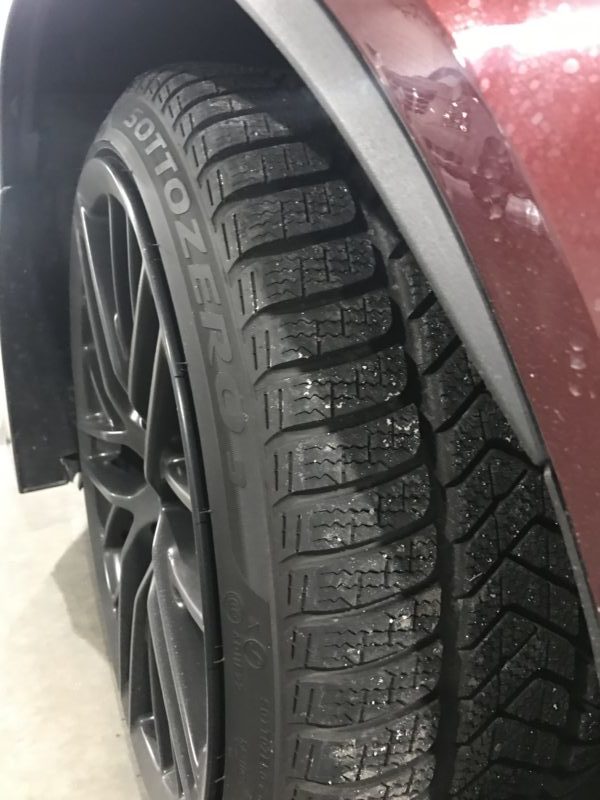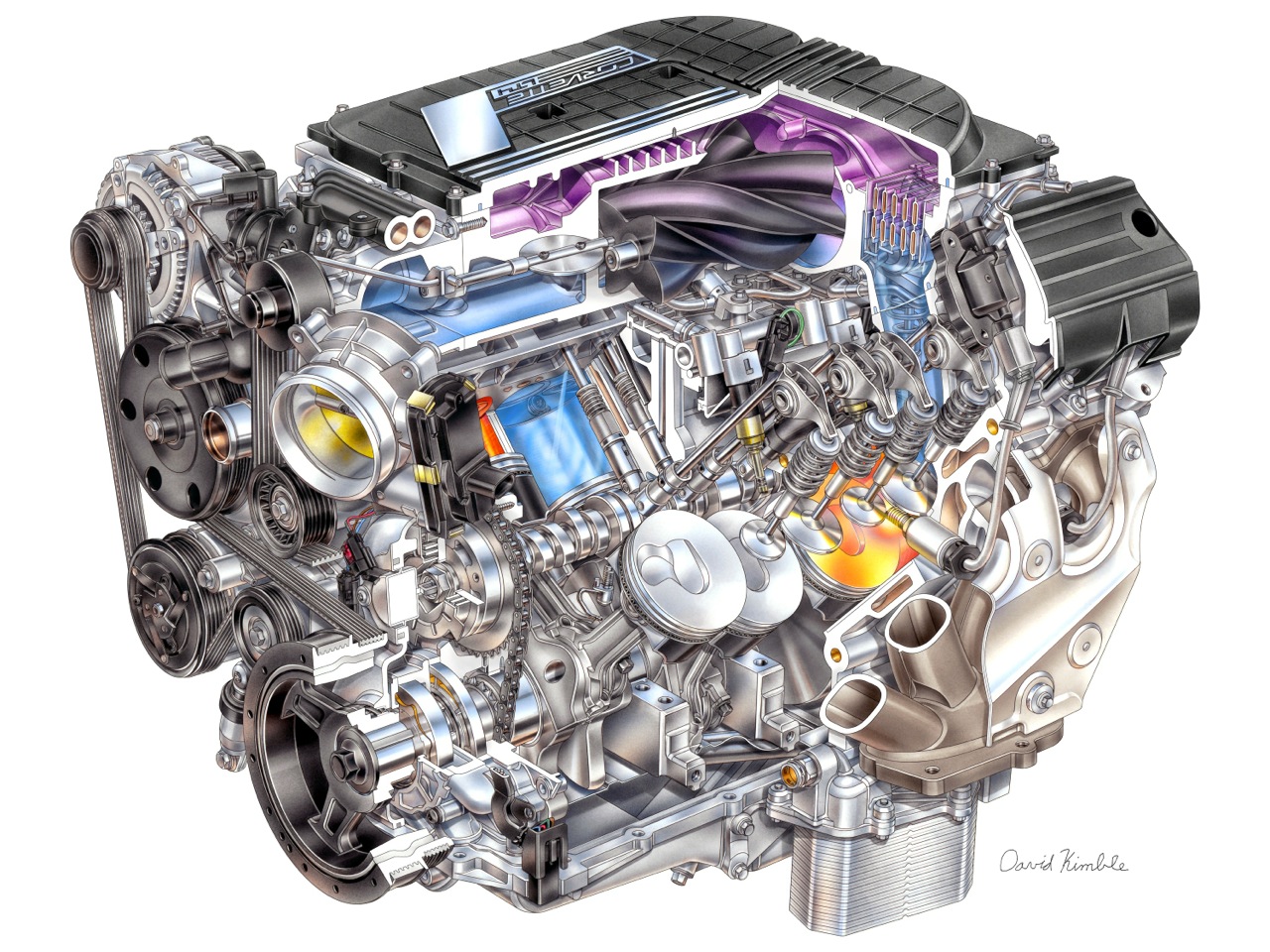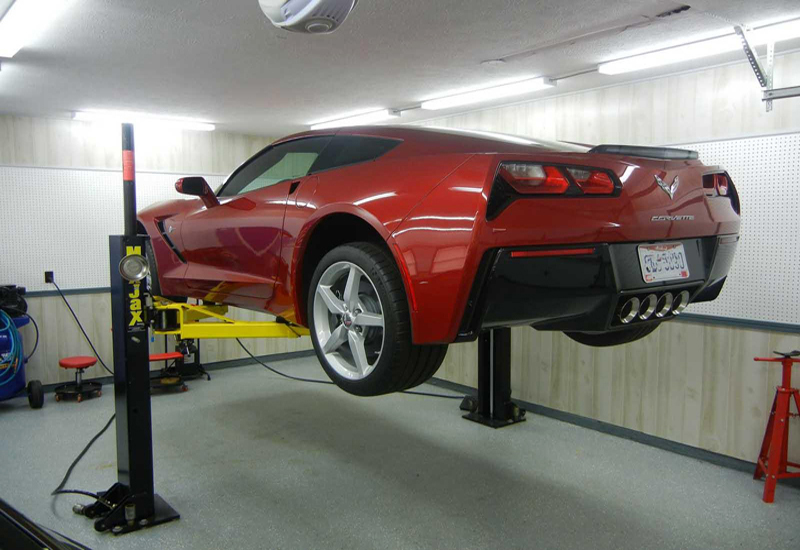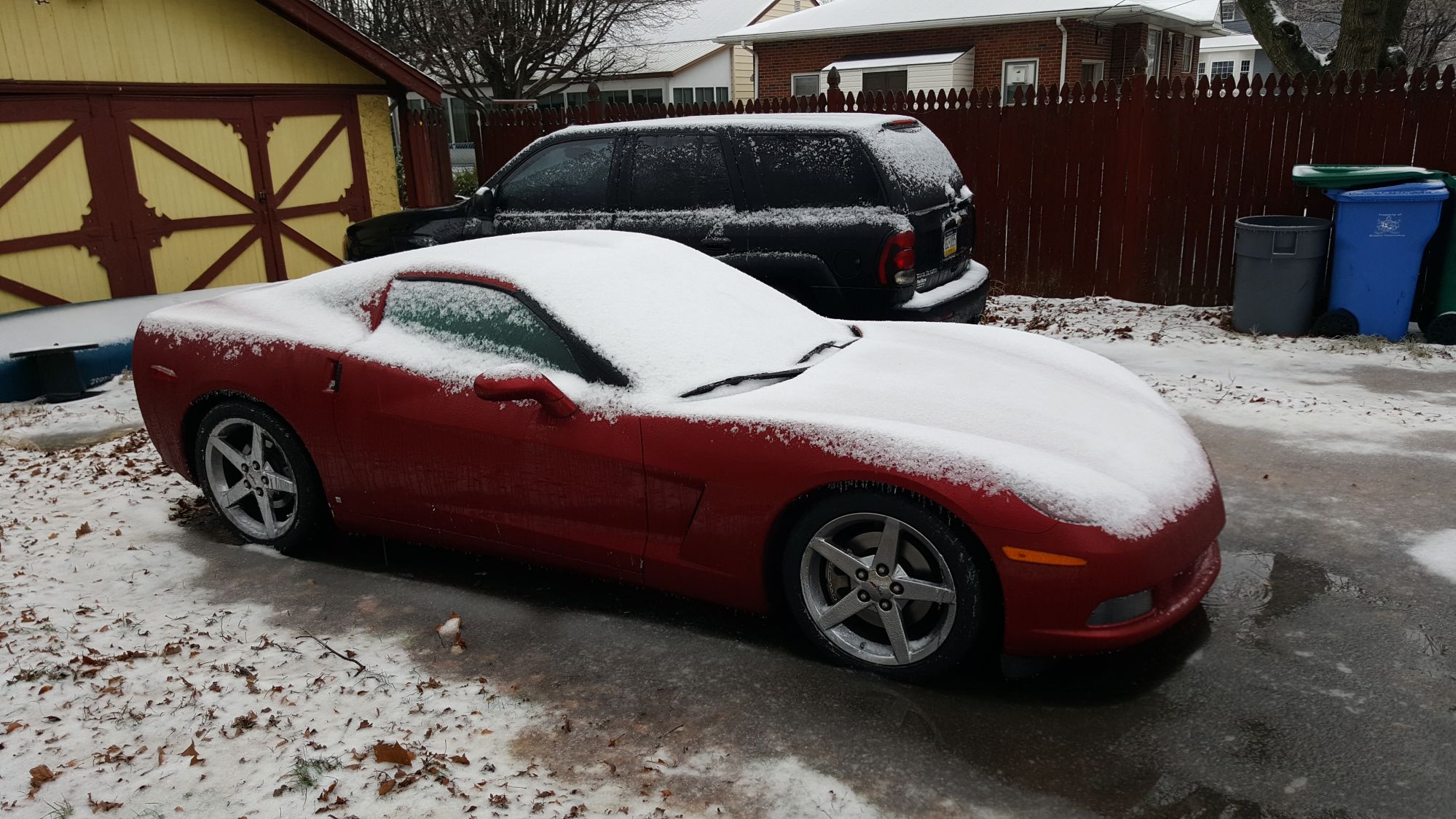Prepping Your Corvette For Winter: Part 2 – Driving

Refusing to Let Winter Keep You Away From Your Corvette? Here Are Seven Steps to Winter-Proofing Your Pride and Joy
We’re already into January, and some of us have yet to commit to putting our Corvettes into storage. If you’re looking to finally get your Corvette into storage for the winter, see part one of our winter-prep series.
For our readers where the winters are a little more mild, or who are particularly enthusiastic about driving their sports cars through the winter, this second edition of “Prepping Your Corvette For Winter” has you covered. In this installment, we’ll discuss the proper methods to prepare America’s Sports Car to drive through America’s winters. These tips are not all Corvette-specific, and similar steps should be taken for any car you plan to drive this winter.
Step 1 – Make Time
This is the most important thing you can do when it comes to winter driving, and it’s absolutely free. If there is white stuff on the ground, leave a little early. Not only is this important because you’ll desist from rushing, but you’ll also allow yourself more time for individual actions like braking and accelerating.
Drive slower, brake earlier, and allow greater distance between you and any cars in your immediate vicinity. It’s better to show up slightly early to an appointment because you departed 10 minutes earlier, than it is to be a no-show because your car is deeply embedded in someone else’s bumper.
Step 2 – Winter Tires
So, how do you fight the ever-worsening battle for traction in a cold and snowy environment? The safest way to do so is with the addition of winter tires. Winter tires are specifically formulated to deal with the lower temperatures and decreased adhesion that comes with a mid-January ice storm.

Winter tires are denoted by the “Three peak/snowflake” design on the sidewalls, not to be confused with “mud and snow”, or “all-season” tires. Having been a Northerner for most of my life, I have come to know “all-season” tires as “all-compromise” tires; they are the jack of all trades, but master of none. Proper winter tires are important for winter driving safety. For the most part, as long as you buy from a tire brand you’ve heard of, you’ll be OK. For older Corvettes I recommend a narrower wheel and a taller sidewall. If your car allows 15s, there are dozens of tires available. For late-model Corvettes, stick to Pirelli Sottozeros or Michelin Alpins.
The kind of winter tire you need is entirely dependent upon personal driving habits and locale. For most, a studless tire will do everything you need. With the right tread pattern, good siping, and a soft compound, you should be able to make quick work of deep snow and light ice. For readers in areas afflicted by what they call “lake-effect” weather systems, however, you may need something just a bit more. Studdable tires like Nokians work wonders for extreme conditions. About 100 little metal spikes are threaded into the tread of the tire to aid in accelerating and heavy braking, potentially helping you to stop precious feet short of a line of traffic waiting at a red light.
Technically, winter tires can be run all year ’round, but being specifically formulated for cold weather (generally less than 40 degrees Fahrenheit), they will wear extraordinarily quickly in high temperatures, and will greatly decrease usable life. A good winter tire will last about four winters in good shape, and should be changed out every spring for a good set of warm-weather tires. Tires that have had studs added are not allowed to be used in certain areas, and those areas where allowed, often have limitations. For example, here in Nevada where I live, studded tires are not allowed for use outside of the range between October 1st and the following 30th of April. Check your local laws and regulations regarding studded tires before having them installed.
Step 3 – Emergency Kit
While it is still warm and dry, you should consider packing yourself a few items in an emergency kit to prepare for the worst. In this age of cell phones, many of us forgo safety kits, but this could be a false sense of security when you are in a particularly dangerous situation. You never know what predicament you may find yourself in, or when a fellow motorist might need your help. It is always a good idea to carry the following with you during winter: A blanket, jumper cables, a flashlight, extra batteries, tire chains (look into new textile chains as a viable replacement), a complete first-aid kit, a small knife, flares, a handful of energy bars, waterproof winter gloves, a small shovel, water-proof matches, an ice scraper, and a bag of kitty litter or sand for traction. While I usually advocate driving your car as lightweight as possible, these few additional pounds could save someone’s life … possibly even your own.
Step 4 – Car Care and Maintenance
As with any change of season, you should prepare your car by instituting a strict regimen of scheduled maintenance. While switching out your summer tires for winter tires, it is a perfectly good time to check your braking system for wear and tear. If pads are low on life, or rotors show deep scoring, it would be wise to have them replaced before entering winter, as there is no worse time to experience poor braking.
To prevent your non-tire-related rubber from drying out and becoming brittle, you should apply a thin coating of rubber care. An additional benefit of this rubber protection is its water-repellent attribute, helping to prevent gaskets from freezing your doors shut in extreme cold. Rubber care products are available at most auto parts stores, or online (my personal favorite is available in a gel stick from Wurth).
These simple and easy tasks go just one step further in the battle against the cold. Additionally, it is always a good idea to replace your windshield wiper blades before the weather turns in order to prevent low visibility contributing to an incident. Also, you should be apprised of the condition of your battery, as cold starts are a heavy draw, and a battery needs to be in good operating condition to turn over a cold engine. Another often overlooked action of winter protection is the preservation of rubber seals and weather stripping.
Step 5 – Oil
Oil is quite literally the lifeblood of your engine. Proper lubrication is especially important when the temperatures turn south. An oil’s viscosity rating is especially important in the winter. The viscosity of an oil is determined by its “SAE rating”, generally portrayed as a number. We’ve all seen 5W-30, SAE30, and 10W-40, but what do they all mean?

In general, the higher the number, the higher the viscosity (thickness), meaning an SAE20 oil would be thinner than an SAE30 oil. In a multi-viscosity oil, the “W number” in the equation stands for “Winter”, and the second number is the oil’s standard SAE rating. As SAE viscosity is measured at 210 degrees F, or the standard operating temperature of a passenger car engine, the Winter number is the equivalent of the oil’s viscosity level at 0 degrees F. Therefore, the lower the W number is, the thinner the oil is at low temperatures, creating a better-lubricated cold start condition for your engine.
As an example, we’ll use Chevrolet’s recommendation for a 2013 Corvette taken directly from the vehicle’s operation manual. During warm temperatures, Chevy recommends quality dexos1-approved, synthetic blend oils with a rating of 5W-30. In areas where extreme cold is seen, stated as down to -20 degrees F, Chevrolet allows the use of a 0W-30. For any other Corvette, be sure to consult your operation manual, or if in doubt, consult a local Corvette specialist shop on which oil is best for your needs.
Step 6 – Fluid Flush
As a general rule, coolant should be mixed with distilled water at a rate of 1:1 until full to prevent the coolant from freezing in the engine and causing damage. If temperatures often dip below 0 degrees F, you should consider increasing the mixture to around 70 percent coolant to 30 percent water. Corvette Dex-cool is best purchased as not-premixed, as it allows you to control the mixture with distilled water. When replacing coolant, it is always best to complete a full flush to rid your system of any old coolant, as well as any contaminants. A properly maintained engine coolant system will also aid in your interior’s heating system, so don’t overlook it.
Additionally, ensure your windshield washer system has fluid rated to the lowest expected temperature in your storage area. There’s nothing worse than having the fluid container cracked and leaking due to frozen washer fluid.
This is also a good time to work through a full fluid flush of your brake system. To keep rust and water out of your braking system, it is best to do this annually.
Step 7 – Corrosion Prevention
Don’t let the fiberglass body lull you into a false sense of security; your Corvette is just as susceptible to rust and corrosion as any steel-bodied car. Fasteners, nuts and bolts, exhaust flanges, subframes — there are a number of components on the underside of your Corvette that need some rust prevention attention.
This is a very time-consuming and very dirty job, but all the same I recommend committing to this process once a year, whether you drive your car in the winter or put it in storage. If you prefer, this process can be done in the spring as the weather warms, or in the fall before it gets too cold. Either way, it needs to be done if you want to keep your car in tip-top shape for a lifetime.
First, get your Corvette into position elevated off the ground on jack stands or a nice lift. Once into position, remove the wheels, wheel liners, belly pans, and rocker covers, and go to town scrubbing.
You’ll want a good soap and a stiff bristle brush. It wouldn’t be a bad idea to use a pressure washer here, either. The underside is often the most neglected part of a vehicle, and when it is out of sight, it is often out of mind. We, as Corvette owners, probably spend 20 weekends a year washing our cars and making them clean enough to eat off of. Spending one weekend ensuring rust won’t eat through the underside of your gleaming beauty is worth it, right?
Once the car is scrubbed clean from the rockers down, make sure to coat each and every bolt, nut, and square inch of floor pan in some form of sprayable rust inhibitor. The WD40 company makes a good one called “Specialist Long-Term Corrosion Inhibitor” that can generally be found for about 14 dollars per can.
And that’s it! The next step is to get out there and drive. With the boatload of work it takes to winterize your Corvette, you’ve certainly earned it.


